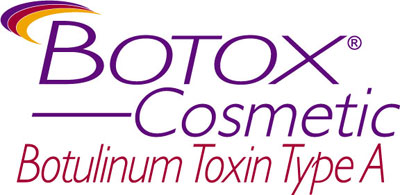Who is the “typical” patient for treatments with injectables?
There are some interesting findings thanks to a survay by Aesthetic Surgery Education and Research Foundation (ASERF) about treatments with injectables. Talking Makeup would like to share with you some!
A recent survey from the Aesthetic Surgery Education and Research Foundation (ASERF) found that respondents are no longer keeping their treatments with injectables a secret! In fact, the survey revealed that nine out of 10 patients discuss the use of treatment with their friends.

What’s more, nearly seven out of 10 received support from those they told. The perceived stigma – or the idea that these treatments are hush-hush or only for the rich and famous – seems to have been removed.
The survey also paints a picture of the “typical” patient, and it’s not who you may expect – she’s a married, working mother making less than six figures!
Who is the “typical” patient for treatments with injectables? Working, married female, with one to three children.

Those receiving injectable treatments are health-conscious (95 percent exercise; 78 percent follow healthy eating habits) showing that injectables complement a healthy lifestyle along with exercise and eating right.
Seven out of 10 believe injectable, non-surgical treatments are important parts of their aesthetic routine.
What’s the most popular filler? The most popular hyaluronic acid dermal filler was Juvéderm Ultra/Ultra Plus (61 percent)
Who are people telling about their treatments? Of the nearly nine out of 10 respondents (87 percent) who openly discuss their BOTOX Cosmetic (Botulinum Toxin Type A) and/or hyaluronic acid dermal fillers (e.g., JUVÉDERM) treatments with others, most are likely to tell their close friends (65 percent) over immediate family and husbands (45 percent).
What kind of feedback do they get? Seven out of ten (70 percent) received support from the people they told while only one out of ten (12 percent) received criticism – demonstrating that aesthetic injectable treatments have continued to evolve into mainstream and accepted options for the everyday woman.
SURVEY REVEALS INJECTABLE PROCEDURES ARE MAINSTREAM AND ACCEPTED MEDICAL AESTHETIC TREATMENT OPTIONS
Survey Shows Majority of Respondents Openly Discuss Use of BOTOX Cosmetic and Hyaluronic Acid Dermal Fillers
Despite what some may think, people aren’t hiding their use of BOTOX Cosmetic and hyaluronic acid dermal fillers. In fact, according to survey statistics released today by The Aesthetic Surgery Education & Research
Foundation (ASERF), the research arm of the American Society for Aesthetic Plastic Surgery (ASAPS), nearly nine out of 10 respondents (87 percent) openly discuss their BOTOX Cosmetic and hyaluronic acid dermal filler treatments with others, with seven out of ten (70 percent) receiving support from the people they told.
“In a similar survey issued four years ago, we dispelled the myth that Hollywood and corporate wives were the typical BOTOX Cosmetic patient,” says ASERF President Laurie Casas, MD, a plastic surgeon practicing in suburban Chicago. “Now, demographic and perception data trends show us that aesthetic injectable treatments have continued to evolve into mainstream and accepted options for the everyday woman.”
Survey results found that the typical aesthetic injectable patient is a married, working mother between 41-55 years of age with a household income of under $100,000. The survey also found that women receiving aesthetic injectable treatments are healthconscious and philanthropy minded, with the majority incorporating exercise (95 percent) and healthy eating habits (78 percent) into their lives, and many volunteering with charitable organizations that matter to them (32 percent). In addition, nearly seven out
of 10 respondents believe that BOTOX Cosmetic (72 percent) and hyaluronic acid dermal fillers (65 percent) are important parts of their aesthetic routine.
“Interestingly, among BOTOX Cosmetic patients, nearly seven out of 10 respondents also received treatment with hyaluronic acid fillers with the majority of respondents being treated with JUVÉDERM,” says Dr. Casas. “Most people have great success with BOTOX Cosmetic and dermal fillers; however, we need to make patients aware that even though injectables are not ‘surgery,’ their administration is a medical procedure
with risks that depend on the training and experience of the clinician, the clinical setting and the technique used.”
Additional findings of the survey found that 72 percent of respondents received BOTOX Cosmetic injections to treat their glabellar lines – also referred to the “11” -the frown lines in between the brows, while 63 percent of those surveyed received hyaluronic acid dermal filler injections to treat their nasolabial folds – also known as the “parentheses” – the lines around the nose and mouth. A few of the most frequently cited reasons to receive treatment with BOTOX Cosmetic was “to look more relaxed, less stressed” while patients reported choosing treatment with hyaluronic acid dermal fillers to “look more rejuvenated.”
Based on its annual survey of U.S. physicians performing cosmetic procedures, ASAPS recently reported that BOTOX Cosmetic injections have remained the most frequently performed procedure since FDA approval of the product in 2002. Hyaluronic acid dermal fillers ranked as the third most popular procedure performed last year. ASERF conducted this follow-up survey to quantify the characteristics and opinions of the patients who receive the treatment to help its members and the public obtain a better understanding of these important modalities.
